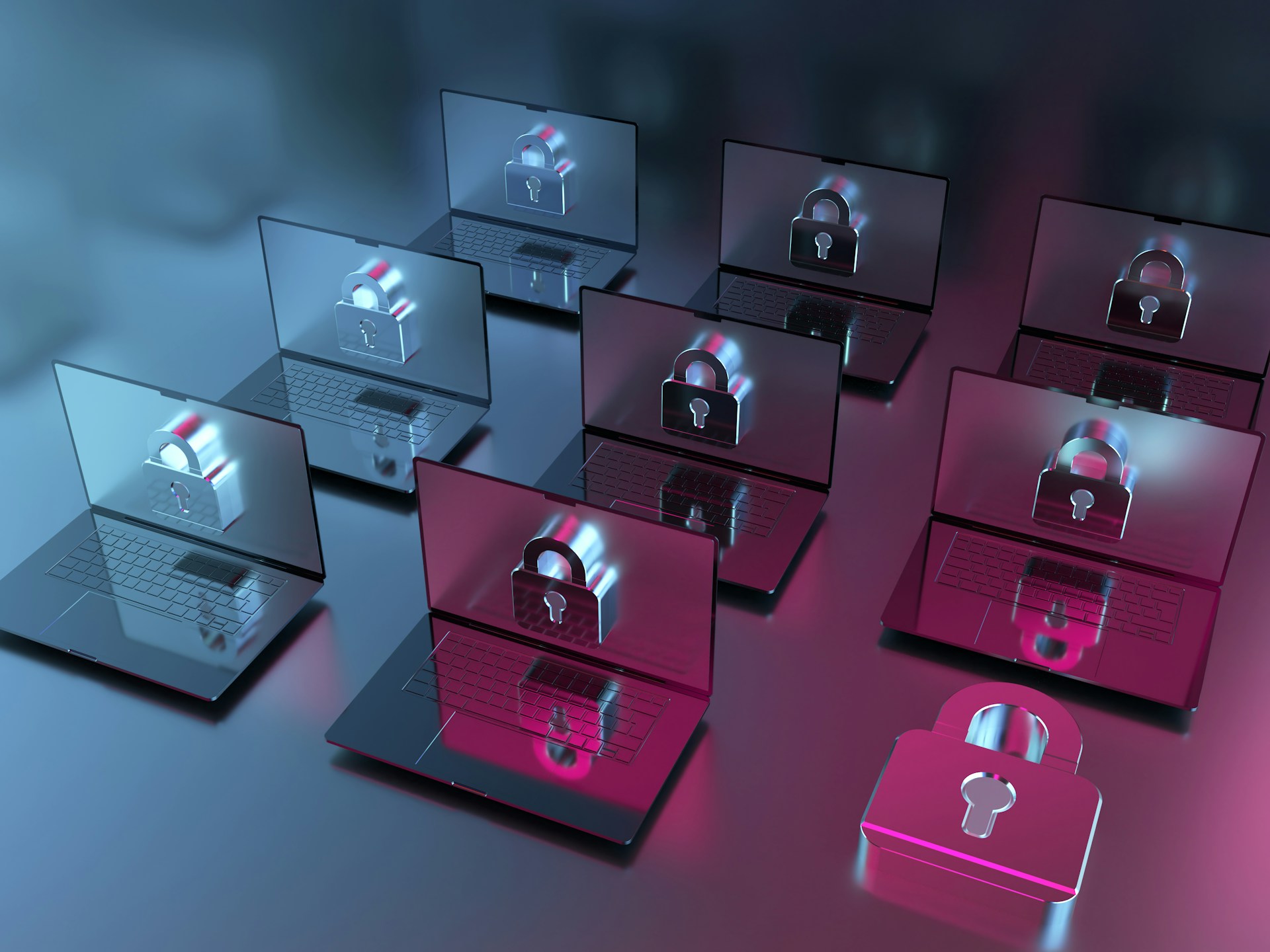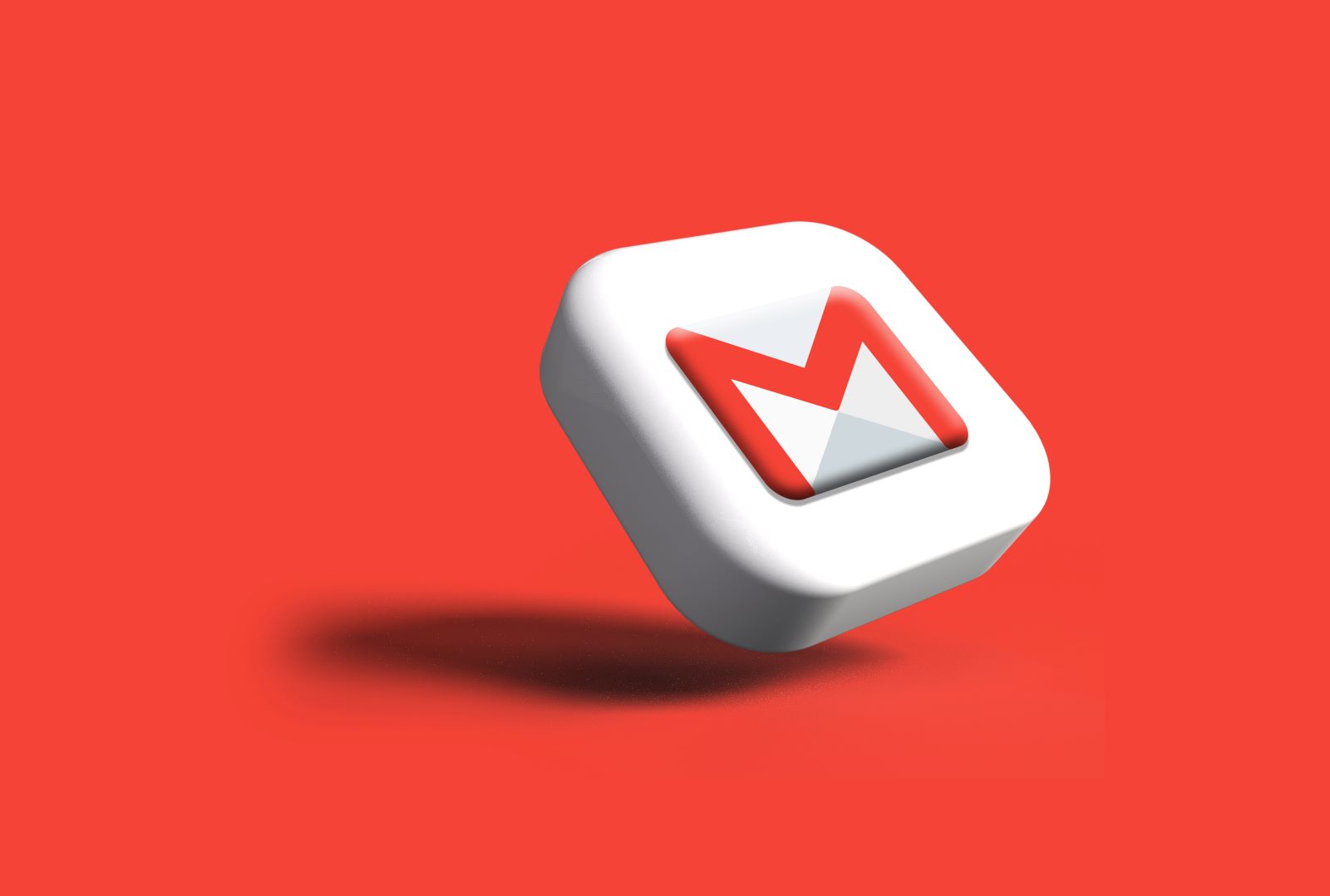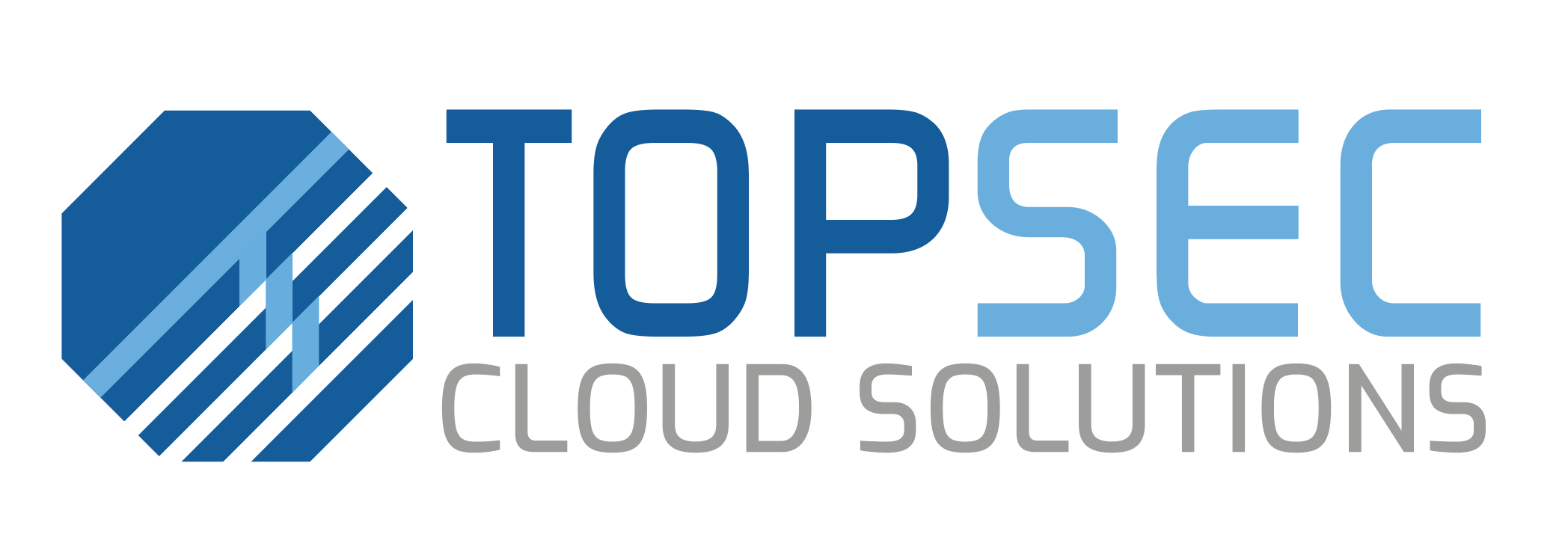How DMARC Is Still Critical and Why Regular Monitoring is Essential

Learn why SPF, DKIM and DMARC are vital for email security, and why continuous monitoring is necessary to prevent phishing, spoofing, and email fraud.
What is Spear Phishing?

What is Spear Phishing? It is considered to be the most potent form of attack, learn how you can prevent these attacks. Get a Quote Download Datasheet Email Security >Phishing What is Spear Phishing? Among different cyberattacks, spear phishing poses the most potent threat. Unlike standard “Spray and Pray” phishing, spear phishing is a highly targeted and deceptive form of attack. It integrates sophisticated social engineering techniques, often going unnoticed by its target. In addition, according to Symantec’s Internet Security Threat Report(ISTR), 65% of attackers relied on spear phishing attacks. So, it’s highly important to understand what spear phishing is to create a protective shield against it. By Cian Fitzpatrick | 16th November, 2023 Spear Phishing Definition Spear phishing is a type of phishing attack that targets highly specific individuals or roles within an organisation to acquire sensitive information. Spear phishing is much more effective than a standard phishing attack. The attacker does intensive research on their target and uses social engineering techniques to craft a message to make it seem to be from a legitimate source. For instance, they collect personal information about a target and send messages disguising themself as a trustworthy friend to acquire sensitive information. Types of Spear Phishing Attacks Some of the major spear phishing types are: 1. Whaling Phishing It is a highly targeted attack that targets high-profile or high-ranking individuals such as C-suite executives or board members. It also involves non-corporate targets such as celebrities or politicians. Attackers aim to fetch large sums of cash or acquire confidential information that can be used against them—no wonder it requires more research than any other form of spear phishing attacks. 2. Business Email Compromise(BEC) CEO Fraud The threat actors impersonate or hack into the email account of a senior executive, typically a CEO. And instruct lower-level employees to wire money into fraudulent accounts by creating a sense of urgency to make them act abruptly. Email Account Compromise(EAC) Attackers gain access to lower-level employees to send fraudulent emails and trick other employees into sharing confidential information. EAC is often used to acquire the credentials of senior executives to perform CEO fraud. Barrel Phishing It is a phishing attack where scammers send emails to a large number of recipients, pretending to be from a legitimate source. The scammers anticipate that at least one recipient will click on the link to steal sensitive information. Try Our Phishing Simulator Now Get Quote How Does Spear Phishing Attack Work? Spear phishing attack works in various stages; they are: Selection of Target Scammers choose individuals or organisations they want to target based on their goals, whether their goal is to gain large sums of money or sensitive information. Use of Reconnaissance Technique Before commencing the attack, the scammer gathers detailed information about the victim using social media platforms. Crafting Email By using gathered information, scammers craft a personalised email to make it look as if it’s from a legitimate source. This causes the target to immediately lower their guard. For instance, it could be a coworker, manager, or a trustworthy friend of the target. Call to Action Fraudulent emails often have a call to action to create a sense of urgency to ensure the attack works 100% of the time. In the heat of the moment, the target will click the link or download an attachment. This action can lead to serious consequences, including identity theft, data breaches, ransomware attacks, corporate espionage, etc. Covering Footprints After the attack, the scammer removes every trace of the attack to evade detection and prolongs access to the system. Common Targets of Spear Phishing Attacks Spear phishing attacks involve detailed research of a high-value or high-profile individual. Even though they are often time-consuming, they yield a higher anticipated reward than standard phishing attacks. Commonly targeted individuals of spear phishing attacks are: High profile individual Scammers target high-profile individuals like CEOs, politicians or celebrities to steal their sensitive information. Lower-level or New Employees Lower-level or newer employees often fall victim to phishing attacks, as they are frequently unaware of policies or procedures they must follow to prevent spear phishing attempts. Specific Group or Types of Employees Scammers target employees with access to sensitive or confidential information, such as HR or finance executives. Learn how you can protect your staff Contact Us Spear Phishing Characteristics Some of the characteristics of spear phishing are: Targeted Recipients Spear phishing employs highly personalised messages to target specific individuals or organisations. These messages focus on high-profile or high-value individuals, promising substantial rewards. Spear phishing targets specific individuals, unlike standard phishing, which targets a high volume of individuals. Personalised Messages Scammers on various social media platforms conduct intensive research on their targets to formulate emails that create a sense of familiarity, often leading to the disclosure of sensitive information. Sophisticated Tactics and Techniques Scammers use reconnaissance and social engineering techniques to carry out spear phishing attacks. The reconnaissance technique involves intensive gathering of information on a target. At the same time, social engineering techniques involve the manipulation of personality traits to make the target perform a certain action. Common Objectives Spear phishing takes on various forms, but the goal remains the same: extracting sensitive information such as credentials or credit card information. Links to Malicious Websites or Files Scammers use phishing emails, which include links to malicious websites or files created by threat actors, to extract sensitive information when recipients click on them. Common Techniques Used in Spear Phishing Attacks Some of the characteristics of spear phishing are: Social Engineering Techniques Spear phishing attacks thrive on social engineering techniques. They manipulate personality traits such as desire to be helpful or curiosity about events or news. Individuals let their guard down easily with this technique, enabling threat actors to leverage the situation to extract sensitive information. Suspicious Emails and Phone Calls Attackers, using generic or misspelt domains in their emails, disguise themselves as legitimate entities to reach out to their targets through emails and phone calls. Malicious Emails with Attachments or Links
What is a DMARC Record?

What is A DMARC Record? Know the components of a DMARC record and it’s importance Get a Quote Download Datasheet Email Security > DMARC What is a DMARC Record? In today’s digital landscape, implementing DMARC records to tackle the rising threat of cyberattacks is of utmost importance. These attacks jeopardise sensitive information and put entities interacting with your company at risk. However, you can eradicate this risk by implementing the DMARC record. These records act as robust shields, instructing recipient servers on handling emails that fail authentication checks. By quarantining or rejecting suspicious emails, it provides a much-needed layer of defence. By Cian Fitzpatrick | 16th November, 2023 What is the Purpose of a DMARC Record? A DMARC record has two main purposes. They are: Instruct the recipient server It guides the recipient server on what to do if the email fails authentication checks like: Reject the message Quarantine the message Allow the message to continue the delivery 2. Send the reports Reports are sent to the email address mentioned in the DMARC record about all email activities associated with the domain. What does a DMARC Record Look Like? Creating a DMARC record ensures servers can distinguish between legitimate and fake emails. As a result, it protects against various security threats, such as phishing, spoofing, and spamming. Before getting started, we need to learn about DMARC TXT Record tags. Tags Meaning V It represents the protocol version. For example, v=DMARC1 pct It is the percentage of messages subjected to filtering. It ranges from 0 to 100. ruf It indicates the reporting URL for forensic reports. rua It indicates the reporting URL for aggregate reports p It is the policy for the organisational domain. It includes three types of policy. “p=none”“p=quarantine” “p=reject” sp Policy for a subdomain of the organisational domain. adkim Alignment mode for DKIM. aspf Alignment mode for SPF fo Get email samples for messages that fail SPF and DKIM. You can choose four values; “0” if SPF and DKIM fail (Default) “1” if SPF or DKIM fails “d” DKIM failure “S” SPF failure Try our 7 day free DMARC trial now Sign Up Now What DMARC Record Looks Like? Typically, DMARC records consist of plain text, a list of DMARC tags segregated by semicolons. It consists of atleast three components, but you can add other optional tags as per need. It’s necessary to place “v” and “p” tags at the beginning; other tags can follow any order. To get in-depth insight, let’s break down the example of a DMARC record and learn it piece by piece. “v=DMARC1; p=none; rua=mailto:dmarc@yourdomain.com” We have three mandatory tags, v, p and rua, with the values DMARC1, none and mailto:dmarc@yourdomain.com. The v tag indicates the version of DMARC. The p tag is the policy that indicates what action the receiver should take if the message fails the authentication checks. The rua tag sends aggregate reports to a specified email. The prefix mailto: should be added before writing an email address. Based on specific requirements or needs, you can use other tags like pct, ruf, fo, etc. DMARC Policy: If your message fails the authentication check, you can specify what actions to take in the policy(p) tag. There are 3 types of policy you can choose from: Monitoring Policy (“p=none“) This policy doesn’t give any protection. But emails are constantly monitored. Generally, during the initial implementation process of DMARC, emails are monitored. Gradually, it is upgraded to quarantine and finally reaches the reject stage. Quarantine Policy(“p=quarantine”) It places emails that fail authentication checks in the spam or quarantine folder. Reject policy (“p=reject“) It immediately rejects emails that fail the authentication check. It protects against fraudulent mail by not giving a single chance to reach the recipient’s email. Why are DMARC Records Important? DMARC has grown from a mere option to the absolute necessity for email security and protection against cyber attacks such as email spoofing and phishing attacks. With the surge in technology, the threat actors have come up with new sophisticated techniques to steal company identity and deceive customers and employees. By implementing DMARC, you’re defending against constantly lurking threats. Improved Email Delivery Performance Even your legitimate emails may fail to reach the recipient server’s inbox. To amend this, you can use the DMARC record, which helps to identify and fix any authentication issues. As a result, email delivery performance is enhanced. Reduced Phishing and Spoofing Attacks It is a primary defence against cyberattacks like phishing, spoofing, and identity theft. In addition, it helps domain owners prevent unauthorised parties from sending emails on their behalf. It protects not only the company but also the customers associated with it. Enhanced Brand Protection and Reputation Building a brand doesn’t happen overnight, yet a single mistake can cause your brand to crumble like a chain of falling dominoes. Not only will your company suffer, you’ll likely lose hard-earned loyal customers. In addition to that, your reputation will take a direct hit, and sometimes, it’s impossible to build your reputation the way it was. DMARC record prevents bad actors from impersonating your brand’s domain. It ensures that your employees and customers get only legitimate emails. Furthermore, it will enhance your credibility as a brand that prioritises protecting your customers’ interests. Increased Visibility into Email Sending Behaviour The DMARC record provides ongoing data about the use of your domain, and it also aids in identifying threat actors that impersonate your domain. Moreover, the reporting mechanism of DMARC will instantly recognise if someone is misusing your domain. More Control Over How Your Domain is Used Implementing DMARC records in your domain’s DNS enables you to gather information about the entities sending emails on your behalf. DMARC record eradicates this risk and prevents your domain from being used for malicious purposes. Learn how you can be DMARC compliant Contact Us How Does a DMARC Record Work? Before publishing the DMARC record, it’s essential to implement DKIM and SPF protocols. Combining these three
Navigating New DMARC Email Authentication Rules for High-Volume Senders

Navigating New DMARC Authentication Rules Google and Yahoo have set strict authentication rules for DMARC, know what that means for you Get a Quote Download Datasheet Email Security > DMARC Navigating New DMARC Authentication Rules for High-Volume Senders Unpack the latest DMARC email authentication requirements set by Gmail and Yahoo for high-volume email senders, exceeding 5,000 daily emails. Discover steps for compliance and best practices for email security. By Cian Fitzpatrick | 7th November, 2023 Understanding Managed Email Security The Evolution of Email Security Standards DMARC is in the news once again. Google recently declared a significant change, setting new requirements to be enforced from February 2024. The new requirements are aimed at entities dispatching over 5,000 emails per day to Gmail accounts. Yahoo! then followed suit with an announcement of their own requiring email authentication. These two announcements signal an industry-wide shift towards stricter email authentication and management practices. This article will chiefly examine Gmail’s stipulations, as Yahoo!’s changes mirror this new industry benchmark. Previously, email authentication was advised as a best practice to protect sender domains and prevent misuse within the email ecosystem. With Gmail’s update, these recommendations have now transitioned into mandatory requirements. With 1.2 billion users situated across the globe, Gmail is the most popular, and the biggest, email provider in the world. And with this new announcement, there is no doubt that the largest email provider in the world is taking a more stringent approach to email security. Key Components and the Importance of DMARC Records DMARC: Not Just Recommended, But Essential A critical change is the mandatory publication of a Domain-based Message Authentication, Reporting, and Conformance (DMARC) record for those meeting Gmail’s specified email volume. It’s important to note that while the DMARC record must be published, it does not necessarily need to be set to the enforcement level (p=reject or p=quarantine) initially. This indicates Gmail’s understanding of the complexities involved in implementing DMARC at a large scale, acknowledging the risk of inadvertently blocking legitimate senders. The implementation of DMARC, despite its complexities, remains a best practice for combating domain spoofing and other abuses. It’s a key strategy in maintaining a secure domain and a trustworthy email environment. Try our 7 day free DMARC trial now Sign Up Now Detailed Look at the Newly Enforced Requirements Mandatory Steps for Compliance For effective compliance with these new standards, high-volume senders should focus on several key areas: Implement Sender Policy Framework (SPF) and DomainKeys Identified Mail (DKIM) for email authentication. Establish a DMARC policy for your sending domain. Tools like Valimail can aid in this setup, guiding senders towards achieving enforcement level. Align the domain in the sender’s “From” header with either the SPF or DKIM domain. Validate sending domains or IPs with accurate forward and reverse DNS (PTR) records. Facilitate one-click unsubscribe features in subscribed messages, ensuring the unsubscribe link is easily noticeable. This method is a proactive step in reducing spam complaints and enhancing recipient trust. Keep spam rates reported in Google Postmaster Tools below 0.3%. Format email messages according to the Internet Message Format standard (RFC 5322). These new requirements redefine what was once an aspirational goal into a necessary standard for high-volume email senders. Google and Yahoo!’s initiatives are driving the industry towards heightened security measures. Although these changes might introduce some initial challenges, they pave the way towards a more secure and effective email communication framework in the long run. As you navigate the complexities of DMARC email authentication rules, especially for high-volume senders, gaining a comprehensive understanding of DMARC becomes crucial. To deepen your knowledge and ensure full compliance, we strongly recommend reading our detailed guide: “What is DMARC?” This guide provides essential insights and actionable steps for effective DMARC implementation, which is not just recommended but essential. Understanding these details will help you comply with the new standards effectively. Contact us to help with your email authentication requirements. With more than 20,000 customers, we protect 2 million + email inboxes a day. And we’d be delighted to protect yours too! Learn how you can be DMARC compliant Contact Us
Who Uses DMARC?

Who Uses DMARC? Know which organisations use DMARC and why it is important to have the right DMARC policy set Get a Quote Download Datasheet Email Security > DMARC Who Uses DMARC? When it comes to email communication, trust is key. And let’s face it; email has become an essential tool for individuals, businesses, and organisations. With the rise in email attacks and spoofing, strong protection is more important than ever. Many organisations have turned to Domain Message Authentication Reporting and Conformance, also known as (DMARC). But who uses DMARC? It’s a question that many people still wonder about. Well, the answer is simple – anyone who wants to protect their email domain from being used for malicious purposes. By Cian Fitzpatrick | 16 September, 2023 What is DMARC? Domain-based Message Authentication, Reporting & Conformance (DMARC) is a widely used advanced email authentication protocol that helps organisations to protect from malicious activities such as phishing, smishing and email fraud. DMARC collaborates with two other important authentication methods, SPF (Sender Policy Network) and DKIM (DomainKeys Identified Mail), designed to secure your emails against misuse and forgery. Explore our comprehensive guide on DMARC, which covers all the essential information about DMARC that you need to know. “SPF (Sender Policy Framework) enables domain owners to specify which servers can send emails on their behalf. Meanwhile, DKIM (DomainKeys Identified Mail) provides an encryption key and digital signature that verifies that an email message was not faked or altered.” Why is DMARC Important? DMARC provides a robust framework and the flexibility to specify how email recipients should treat unauthenticated emails that proclaim to be from your domain. DMARC is necessary to combat email fraud, safeguard individuals and organisations from email scams, and promote brand reputation. It also helps create a secure environment for you and your stakeholders. Get Your Policy=Reject Contact Topsec today Get Quote Who Uses DMARC? Whether you’re a small business owner, a non-profit organisation, or a large corporation, DMARC is mandatory for your email security. It safeguards your email and ensures your recipients know your messages come from a trusted source. Listed below are some of many who can reap its strong protection: Email Service Providers (ESPs) Email service providers can fully use DMARC to enhance their email infrastructure security. It ensures that customers receive only authenticated email messages. Many email service providers, such as Gmail, Microsoft (Outlook), Yahoo Mail, and Apple (iCloud mail), have already leveraged DMARC. Government Agencies It is a must for government bodies to implement DMARC to handle sensitive and critical information through email. Be it at local, regional, or national levels, implementing DMARC helps them fight against phishing attempts and secure their communication channels. Financial Institutions Financial industries are vulnerable to a cyber threat that aims to steal sensitive data. DMARC plays a crucial role in assisting banks, credit unions and other financial institutions to safeguard their customers. Healthcare Organisations Many healthcare providers are transitioning their operations online. They deal with patients’ sensitive data through emails, and DMARC helps secure this communication to ensure patient privacy. Educational Institutions Schools, colleges and universities regularly communicate through email. DMARC adds an essential layer of defence. It stops attackers from impersonating employees or students with fake email addresses. Technology Companies The technology sector is a prime target for cyber threats. DMARC is an essential tool for software companies, tech startups, and IT service providers to maintain their email security and build trust with their clients. Non-Profit Organisations Email is a crucial channel for raising funds and reaching out to donors, partners, and supporters of non-profit organisations. Unfortunately, cybercriminals take this as an opportunity to exploit the parties involved. Imposing DMARC strengthens NPOs’ defence and credibility by protecting donors’ personal information and preventing donation loss due to email scams. Businesses and Corporations Companies of all sizes heavily rely on email for internal or external communications. Deploying DMARC protects the sensitive information shared through email, such as financial data, trade secrets and strategic plans. Additionally, it provides a layer of trust in its customers by ensuring that emails sent from the organisation’s domain are legitimate and verified. E-commerce Companies E-commerce deals with fragile consumer data and conducts transactions through email every day. They need to ensure proper email security. DMARC protects customers from fraudulent emails and phishing attacks. Individuals Individuals often use email for various purposes, including financial transactions, such as online purchases, invoice payments, and banking communications. DMARC ensures that emails from financial institutions are legitimate and prevents fraudulent attempts to steal personal and financial information. Contact Us to implement your DMARC Policy Call Us Now Examples of Global Organisations using DMARC Several prominent global organisations have adopted DMARC to bolster their email security and protect their email domains from phishing and fraud. Brands and organisations who have efficiently implemented DMARC, DKIM, and SPF include: Apple (apple.com) Dell Computers (dell.com) Amazon (amazon.com) Walmart (walmart.com) Uber (uber.com) WhatsApp (whatsapp.com) PayPal (paypal.com) Facebook (facebook.com) Twitter (twitter.com) Instagram (instagram.com) Costco (costco.com) TOPSEC for DMARC Protection In the ever-evolving landscape of email threats, businesses must stay one step ahead and take proactive measures to protect their communication channels. It’s never too late to take steps to secure your email communications. With precise threat detection, a comprehensive security solution and a fully managed approach, Topsec provides exceptional email security services for businesses and organisations. Protect your email defences with Topsec DMARC Protection to guarantee the authenticity and integrity of your email communications. Request a quote today. Conclusion DMARC’s strong protection and easy implementation are a no-brainer for anyone who takes email security services seriously. Safeguarding email communication and maintaining customer trust are top priorities for any organisation. DMARC plays a crucial role in the fight against email-related cybersecurity threats, providing a proactive approach that helps organisations comply with data privacy regulations, such as GDPR (General Data Protection Regulation). Implementing DMARC protects email data from unauthorised access, enabling organisations to uphold the confidentiality and security of their client’s information. FAQ’s Is DMARC only for email? DMARC
How Does DMARC Work?

How Does DMARC Work? Learn the technical specification of DMARC and how a DMARC policy works Get a Quote Download Datasheet Email Security > DMARC How Does DMARC Work? Email communication is a crucial aspect of daily operations when you run an organisation. You and your team exchange emails daily, which may contain sensitive information that could be compromised by various risks. Therefore, the security of your email communication becomes crucial. By Cian Fitzpatrick | 3 August, 2023 Taking the necessary measures to safeguard your email communication will help protect your organisation’s valuable data and maintain your stakeholders’ trust. Hence, DMARC services (Domain-based Message Authentication, Reporting, and Conformance) play a powerful solution to enhance your organisation’s email security. What is DMARC in email? DMARC stands for Domain-based Message Authentication Reporting & Conformance, a security protocol used to authenticate an email. It protects domain owners from spam, phishing, and other email scams that can happen through email. It combines two essential components such as SPF (Sender Policy Framework) and DKIM (Domain Keys Identified Mail), that provide a framework to verify the authenticity of incoming email messages. Take a look at our comprehensive DMARC guide to get all the necessary information. What Are SPF, DNS and DKIM? Through SPF (Sender Policy Framework), you can specify which IP addresses can send emails from your domain. When an email is received, the receiving email server checks the SPF record to verify if the sender’s IP address is authorised to send emails for that particular domain. If the email fails the SPF check, it is considered potentially fraudulent. “DNS (Domain Name System) acts as a phonebook for the internet. When you type a domain name like “example.com” into your web browser, the DNS system translates that domain name into the corresponding IP address (such as 192.0.2.1) that identifies the server where the website is hosted. “ DKIM (Domain Keys Identified Mail) is an email authentication method that adds an extra layer of security by digitally signing outgoing emails with a private key and attaching the signature to the email headers. The recipient’s server then uses the public key published in the DNS to verify the authenticity and integrity of the email. This ensures that the message originated from the authorised domain. However, SPF and DKIM alone cannot fully protect against email fraud. This is where DMARC plays an important role. It builds upon SPF and DKIM to provide a comprehensive framework for email authentication and policy enforcement. Get Your Policy=Reject Contact Topsec today Get Quote The Link Between DMARC, SPF, and DKIM in Email Authentication DMARC, SPF, and DKIM work together to authenticate emails and prevent fraudulent activities. SPF helps verify the sender’s IP address. DKIM verifies the integrity and authenticity of the email, and DMARC allows domain owners to set policies and receive reports on email authentication. Together, these protocols prevent email fraud, phishing, and spoofing attacks, providing more secure email communication. Technical Specifications of DMARC DMARC is a flexible protocol that domain owners can customise based on their needs. The technical specifications of DMARC are as follows: DMARC Record A DMARC record is a simple text file that stores a domain’s DMARC policy. It instructs email receivers on what actions to take when an email fails DMARC authentication and where to send reports. The DMARC record includes various parameters, such as the chosen DMARC policy, which determines how emails that fail DMARC validation are handled. Policy Modes DMARC allows domain owners to specify different policy modes if an email fails the SPF or DKIM process. There are three different policy modes, such as “None,” “Quarantine,” and “Reject.” Alignment Two alignment checks known as SPF Alignment and DKIM Alignment ensure the “From” header domains match the authenticated domains used in SPF and DKIM. Reporting DMARC sends reports to domain owners known as “Aggregate Reports” and “Failure Reports”. These reports provide SPM and DKIM statistics, alignment results, sending sources, and more. Subdomain Policy DMARC allows domain owners to specify separate policies for subdomains to enable control over email authentication for different subdomains. DMARC Tag-Value Syntax DMARC uses a specific syntax to provide instructions or information. The common tags used in DMARC records include “v” for protocol version, “p” for policy, “rua” for aggregate report addresses, “ruf” for failure report addresses, and “sp” for subdomain policies. Contact Us to implement your DMARC Policy Call Us Now How Does DMARC Work? DMARC offers domain owners and organisations a framework to specify how email receivers should handle unauthenticated emails that claim to come from their domain. It helps to ensure the safety and security of email communication. Here’s a step-by-step explanation of how DMARC works: Setting up DMARC Record: The domain owners add DMARC records to the DNS zone file. The record includes the DMARC policy for the domain and provides instructions to email receivers on handling incoming emails from that domain. Incoming Email: When receiving an email, the server checks whether the DMARC record is in the sender’s domain DNS. SPF and DKIM Checks: The recipient’s email server then performs SPF and DKIM checks for the email’s authenticity. SPF validates the sender’s IP address, while DKIM verifies the digital signature associated with the email. DMARC Alignment: Once the SPF and DKIM checks are completed, DMARC checks if the “From” header domain matches the domain authorised in the SPF and DKIM checks. The DMARC alignment ensures the email is sent from an authorised sender and hasn’t been spoofed. DMARC Policy Evaluation: The recipient’s email server evaluates the SPF and DKIM results based on the specified DMARC policy. There are three types of DMARC policies: None Policy (“p=none”): In the None policy, no specific action is taken on unauthenticated emails. However, reports are still generated and sent to the domain owner for monitoring. Quarantine Policy (“p=quarantine”): Under Quarantine policy, an email that fails authentication is considered suspicious and placed in the recipient’s spam or quarantine folder. Reject Policy (“p=reject”): When the Reject policy is specified, all
What is DMARC? A Complete Guide

What is DMARC? A Complete Guide Having a DMARC policy helps in authenticating your email and protects brand reputation. Get a Quote Download Datasheet Email Security > DMARC What is DMARC? A Complete Guide DMARC is an open email authentication protocol that provides robust domain-level fortification of the email communication channel. It is a robust shield protecting email domain owners from unsolicited exploitation and malicious activities. DMARC is a protocol—essentially a set of rules—that dictates how email receivers and senders handle email authentication. By Cian Fitzpatrick | 18 July, 2023 DMARC significantly diminishes the likelihood of phishing and spoofed emails breaching security and ending up in an end user’s inbox. It has proven an indispensable ally in the relentless battle against email-related cybersecurity threats. What does DMARC stand for? DMARC stands for Domain-based Message Authentication, Reporting & Conformance. It functions as a roadmap to guide the email authentication process. It offers email domain owners a mechanism to defend against misuse and potential cyber threats while ensuring the unhindered flow of authorised emails. What is DMARC in email? DMARC in email operates as a steadfast security guard for your domain. It’s a policy allowing domain owners to specify that their emails are protected by SPF (Sender Policy Framework) and DKIM (DomainKeys Identified Mail). It communicates to the recipient’s mail server how to handle emails from your domain that fail SPF and DKIM checks—thereby adding an additional layer of authenticity and security. How does DMARC work? DMARC is a vital line of defence in email security, following SPF and DKIM. When an email arrives, the recipient’s mail server initiates a DMARC check. This check involves verifying whether the email aligns with the DMARC policy specified by the domain owner. If the email passes the DMARC check, it lands safely in the recipient’s inbox. If it fails, however, the recipient’s mail server takes action according to the DMARC policy—either marking the email as spam, rejecting it entirely, or delivering it with a warning. If you’re curious about the intricate details of the verification process, delve deeper by reading our comprehensive post on How does DMARC work? Key Components of DMARC DMARC comprises several integral components, each performing a unique function in the email authentication process. There are three key components- DMARC Record, DMARC Report and DMARC Authentication. Understanding these components can greatly enhance your ability to leverage DMARC for improved email security. DMARC Record A DMARC record is a text (TXT) entry in your domain’s DNS (Domain Name System) record. It specifies the DMARC policies for your domain. When a recipient’s mail server receives an email from your domain, it checks the DNS for your DMARC record to determine how to handle the email. DMARC record lets you decide whether to reject, quarantine, or accept emails that fail DMARC checks. DMARC Report A DMARC report is a document generated by the recipient’s mail server after it has checked an email against your DMARC policy. It provides vital information on who is sending emails on your behalf, the number of emails sent, and the number of those emails that passed or failed DMARC checks. DMARC reports are invaluable for identifying potential issues and ensuring your email authentication protocols work as intended. DMARC Authentication DMARC authentication is the process by which the recipient’s mail server verifies an email against the DMARC policy specified in your DNS. It checks whether the email passes SPF and DKIM checks and whether the domain in the DKIM signature or the domain in the email’s return-path (envelope from) aligns with the domain in the email’s header-from. The email is authenticated if it passes these checks; if not, the mail server takes action as specified in your DMARC policy. Get Your Policy=Reject Contact Topsec today Get Quote DMARC, SPF, and DKIM: A Comparison Email authentication can often appear as a complex maze of acronyms. Appreciating how these different security measures—DMARC, SPF, and DKIM—interact and complement one another is important. What are DMARC, DKIM, and SPF? DMARC, SPF, and DKIM are all authentication methods designed to secure your emails against misuse and forgery. SPF (Sender Policy Framework) enables domain owners to specify which servers can send emails on their behalf. Meanwhile, DKIM (DomainKeys Identified Mail) provides an encryption key and digital signature that verifies that an email message was not faked or altered. DMARC unifies the SPF and DKIM authentication mechanisms into a common framework. It allows domain owners to declare how they would like an email from that domain handled if it fails authentication. What is a DMARC policy? A DMARC policy is a specification that the domain owner sets in their DMARC record. It instructs the recipient’s mail server on actions to take if an email fails DMARC authentication. The policy can be set to none (take no action), quarantine (mark as spam or segregate), or reject (discard the email). What are the different types of DMARC policies? Monitor (p=none): It allows all emails, even those failing DMARC checks, to be delivered, usually for monitoring purposes. Quarantine (p=quarantine): It places failing emails into the spam or junk folder. Reject (p=reject): It blocks delivery of non-compliant emails. How to choose the right DMARC policy? Choosing the right DMARC policy depends on your organisation’s risk appetite and your confidence in your email authentication setup. If you’re beginning with DMARC, a ‘none’ policy can be a good starting point for monitoring your email flow. Once you’ve optimised your SPF and DKIM setups and are confident about the legitimacy of your outgoing emails, you can move to a ‘quarantine’ policy and eventually a ‘reject’ policy for full protection. Contact Us to implement your DMARC Policy Call Us Now How to Implement Your DMARC Policy? To implement DMARC, you must ensure your emails are SPF and DKIM-compliant. Next, you publish a DMARC record in your DNS with a ‘none’ policy for monitoring. After analysing the DMARC reports and resolving any issues, you can gradually move to a ‘quarantine’ and then a ‘reject’ policy. Common challenges

